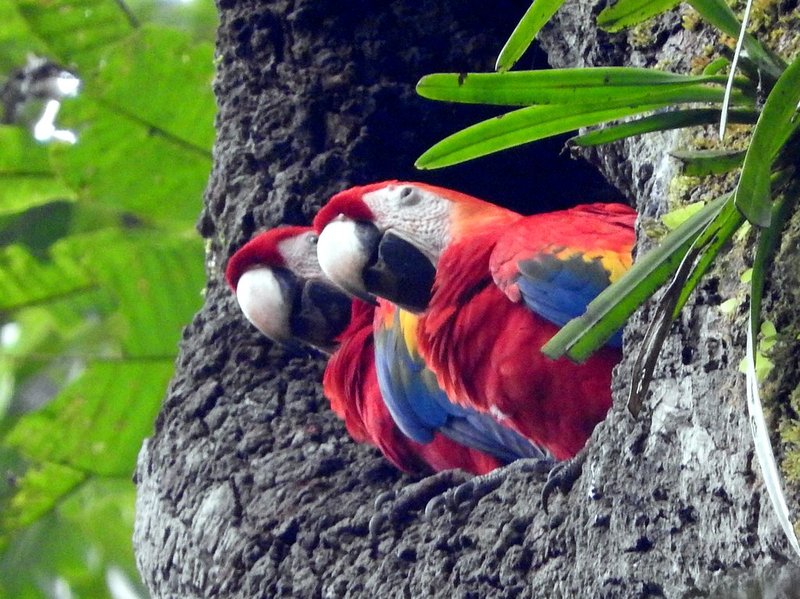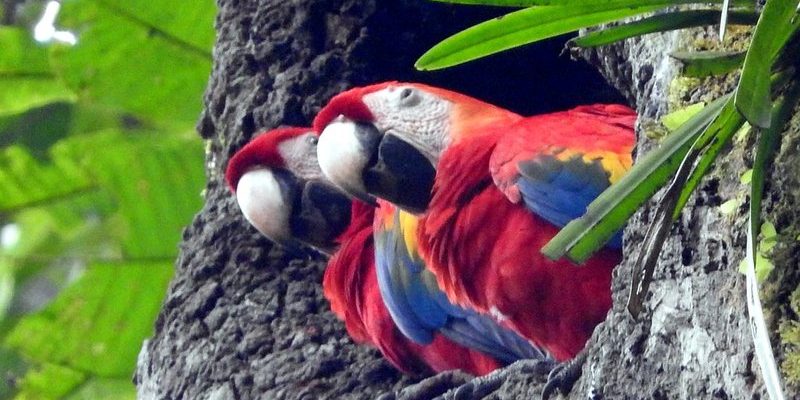
Let’s dive into the fascinating world of macaw breeding. These birds are not just stunning to look at; they have complex social structures and nurturing instincts that can be both rewarding and demanding. Whether you’re a seasoned bird owner or just starting to explore the idea of breeding, understanding their nesting habits, the incubation period, and proper chick care can be incredibly helpful. So, grab a cup of coffee, and let’s explore how you can support these magnificent creatures!
Nesting Habits of Macaws
When it comes to nesting, macaws are pretty selective. They typically prefer natural cavities in trees or rock crevices, where they feel secure from predators. But if you’re breeding them in captivity, you need to replicate this environment as closely as possible. Setting up the right nesting box is crucial.
A good nesting box should be sturdy and spacious, providing enough room for the female to turn around comfortably. It should ideally have a depth of at least 24 inches and a width of about 18 inches. You can use hardwood for construction since it’s durable and safe for the birds. Make sure the entrance hole is large enough for the macaws to enter but not so big that it compromises their safety.
You might wonder, how do macaws choose their nesting sites? It’s often a combination of instinct and trial and error. They look for quiet, hidden places where they can lay their eggs with minimal disturbance. This is why, if you’re breeding in captivity, their nesting area should be in a quiet part of your home, away from loud noises and frequent interruptions.
Understanding the Incubation Period
Once the female macaw lays her eggs, which is usually between 2 to 4 eggs, the incubation period begins. This stage is crucial because it determines whether the chicks will hatch healthy. Generally, macaws incubate their eggs for about 24 to 28 days. During this time, both parents will take turns sitting on the eggs to keep them warm.
Here’s the thing: not all eggs will hatch, and that’s completely normal. Factors such as genetics, egg quality, and environmental conditions can play a significant role in chick viability. You might be thinking, “How can I ensure the best conditions for hatching?” Keeping the nesting area at a stable, warm temperature is vital. If it gets too cold or too hot, it can affect the eggs.
Monitoring the eggs is important, but avoid frequently disturbing them. Every time you touch the eggs, you risk transferring your scent to them, which might cause the parents to reject them. Instead, observe from a distance and only check when absolutely necessary—for example, if you notice that a parent is not spending enough time on the nest.
Chick Care After Hatching
Once the chicks hatch, the real adventure begins! Macaw chicks are incredibly vulnerable in their early days. They rely on their parents for warmth, food, and protection. At this stage, both parents will work together to feed and care for their young—usually regurgitating food for them until they’re old enough to eat solids.
You might be wondering how you can help. If you are breeding macaws in captivity and are concerned about the parents not feeding the chicks, you can step in, but do so cautiously. Hand-feeding is an option, but it requires special formulas and careful techniques to ensure the chicks receive proper nutrition without being overfed or underfed.
Chick care is not just about feeding. You also need to monitor their development closely. Macaw chicks typically fledge (leave the nest) at around 12 weeks, but they may need to stay with their parents longer to learn essential survival skills. Watching them grow and develop their feathers is a magical experience, as they transition from fluffy little balls to colorful, vibrant birds.
The Role of the Parents
Parenting in the macaw world is a joint effort. Both the male and female have specific roles, which is fascinating to observe. The female generally takes on the primary task of incubating the eggs and caring for the chicks right after they hatch. Meanwhile, the male is usually responsible for bringing food and protecting the family from any potential threats.
You might ask, “What happens if one parent isn’t doing their part?” If one of the parents is not involved, it could lead to stress for the other. In that case, you may need to step in and provide additional support. This might mean hand-feeding the chicks if the female isn’t able to care for them adequately or monitoring the nest more closely to ensure their safety.
Over time, as the chicks grow, they’ll start to mimic their parents—practicing behaviors and socializing. It’s a beautiful part of the breeding process; watching them learn how to communicate and interact is truly heartwarming. Ensuring that the parents are healthy and stress-free is vital, as this ultimately impacts the chicks’ development and well-being.
Common Challenges in Breeding Macaws
Breeding macaws can be rewarding, but it doesn’t come without its challenges. One significant issue is fertility. Sometimes, despite all the right conditions, the eggs may not be viable. This can be disheartening, but it’s essential to remember that nature has its own rhythm.
Another challenge can be aggression among the pair. Some macaws can be territorial, especially when they feel threatened. If you notice any signs of aggression, such as squawking or bites while they’re trying to care for their young, it may be time to separate them temporarily.
Finally, health problems can arise. Just like any other pets, macaws can face issues like nutritional deficiencies or illness. Regular vet check-ups and a balanced diet are crucial for the well-being of both the parents and the chicks. Keeping an eye on their behavior, eating habits, and energy levels can help you catch any problems early.
Preparing for Chick Development and Weaning
As the chicks grow, there’s a lot you can do to support their development. At around three weeks old, they will start to develop feathers and begin to explore their surroundings. It’s essential to provide a safe area for them to practice flying and climbing, as this helps strengthen their muscles.
Weaning typically starts around eight to twelve weeks, and during this time, you’ll need to introduce solid foods gradually. Offer a variety of healthy fruits, vegetables, and specially formulated pelleted diets to ensure they are getting the right nutrients. Honestly, watching them explore new foods is entertaining—they’ll often make funny faces as they sample different flavors!
You might be wondering when it’s best to separate the chicks from their parents. Though it varies by individual bird, most macaws are ready to be independent around six months, but ensure they’re fully weaned and comfortable eating on their own before making any permanent changes.
Breeding macaws is a journey filled with care, patience, and a touch of love. From the nesting stage to incubation and chick care, each phase plays a vital role in ensuring healthy, happy birds. While it may come with its challenges, the rewards—watching those chicks grow into stunning, intelligent companions—are worth every moment.
As you embark on this adventure, remember that your role as a caregiver extends beyond their early days. Providing a supportive environment and ongoing care will allow both parents and chicks to thrive. So, stay attentive, enjoy the process, and cherish the special moments that come with raising these magnificent birds.

